
- Why Does Water Expand When It Freezes
Gold Foil Experiment
- Faraday Cage
- Oil Drop Experiment
- Magnetic Monopole
- Why Do Fireflies Light Up
- Types of Blood Cells With Their Structure, and Functions
- The Main Parts of a Plant With Their Functions
- Parts of a Flower With Their Structure and Functions
- Parts of a Leaf With Their Structure and Functions
- Why Does Ice Float on Water
- Why Does Oil Float on Water
- How Do Clouds Form
- What Causes Lightning
- How are Diamonds Made
- Types of Meteorites
- Types of Volcanoes
- Types of Rocks

Who did the Gold Foil Experiment?
The gold foil experiment was a pathbreaking work conducted by scientists Hans Geiger and Ernest Marsden under the supervision of Nobel laureate physicist Ernest Rutherford that led to the discovery of the proper structure of an atom . Known as the Geiger-Marsden experiment, it was performed at the Physical Laboratories of the University of Manchester between 1908 and 1913.
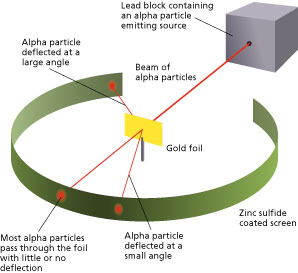
The prevalent atomic theory at the time of the research was the plum pudding model that was developed by Lord Kelvin and further improved by J.J. Thomson. According to the theory, an atom was a positively charged sphere with the electrons embedded in it like plums in a Christmas pudding.
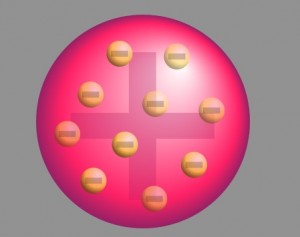
With neutrons and protons yet to be discovered, the theory was derived following the classical Newtonian Physics. However, in the absence of experimental proof, this approach lacked proper acceptance by the scientific community.
What is the Gold Foil Experiment?
Description.
The method used by scientists included the following experimental steps and procedure. They bombarded a thin gold foil of thickness approximately 8.6 x 10 -6 cm with a beam of alpha particles in a vacuum. Alpha particles are positively charged particles with a mass of about four times that of a hydrogen atom and are found in radioactive natural substances. They used gold since it is highly malleable, producing sheets that can be only a few atoms thick, thereby ensuring smooth passage of the alpha particles. A circular screen coated with zinc sulfide surrounded the foil. Since the positively charged alpha particles possess mass and move very fast, it was hypothesized that they would penetrate the thin gold foil and land themselves on the screen, producing fluorescence in the part they struck.
Like the plum pudding model, since the positive charge of atoms was evenly distributed and too small as compared to that of the alpha particles, the deflection of the particulate matter was predicted to be less than a small fraction of a degree.
Observation
Though most of the alpha particles behaved as expected, there was a noticeable fraction of particles that got scattered by angles greater than 90 degrees. There were about 1 in every 2000 particles that got scattered by a full 180 degree, i.e., they retraced their path after hitting the gold foil.
Simulation of Rutherford’s Gold Foil Experiment Courtesy: University of Colorado Boulder
The unexpected outcome could have only one explanation – a highly concentrated positive charge at the center of an atom that caused an electrostatic repulsion of the particles strong enough to bounce them back to their source. The particles that got deflected by huge angles passed close to the said concentrated mass. Most of the particles moved undeviated as there was no obstruction to their path, proving that the majority of an atom is empty.
In addition to the above, Rutherford concluded that since the central core could deflect the dense alpha particles, it shows that almost the entire mass of the atom is concentrated there. Rutherford named it the “nucleus” after experimenting with various gases. He also used materials other than gold for the foil, though the gold foil version gained the most popularity.
He further went on to reject the plum pudding model and developed a new atomic structure called the planetary model. In this model, a vastly empty atom holds a tiny nucleus at the center surrounded by a cloud of electrons. As a result of his gold foil experiment, Rutherford’s atomic theory holds good even today.
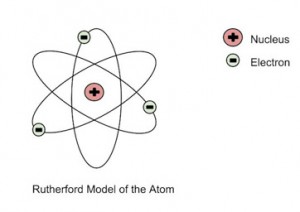
Rutherford’s Atomic Model
Rutherford’s Gold Foil Experiment Animation
- Rutherford demonstrated his experiment on bombarding thin gold foil with alpha particles contributed immensely to the atomic theory by proposing his nuclear atomic model.
- The nuclear model of the atom consists of a small and dense positively charged interior surrounded by a cloud of electrons.
- The significance and purpose of the gold foil experiment are still prevalent today. The discovery of the nucleus paved the way for further research, unraveling a list of unknown fundamental particles.
- Chemed.chem.purdue.edu
- Chem.libretexts.org
- Large.stanford.edu
- Radioa ctivity.eu.com
Article was last reviewed on Friday, February 3, 2023
Related articles

5 responses to “Gold Foil Experiment”
Super very much helpful to me,clear explanation about every act done by our Rutherford that is under different sub headings ,which is very much clear to ,to study .very much thanks to the science facts.com.thank u so much.
Good explanation,very helpful ,thank u ,so much
very clear and helpful, perfect for my science project!
Thank you for sharing the interactive program on the effects of the type of atom on the experiment! Looking forward to sharing this with my ninth graders!
Rutherford spearheaded with a team of scientist in his experiment of gold foil to capture the particles of the year 1911. It’s the beginning of explaining particles that float and are compacted . Rutherford discovered this atom through countless experiments which was the revolutionary discovery of the atomic nuclear . Rutherford name the atom as a positive charge and the the center is the nucleus.
Barack Hussein Obama
Mrs. Danize Obama
Leave a Reply Cancel reply
Your email address will not be published. Required fields are marked *
Save my name, email, and website in this browser for the next time I comment.
Popular Articles
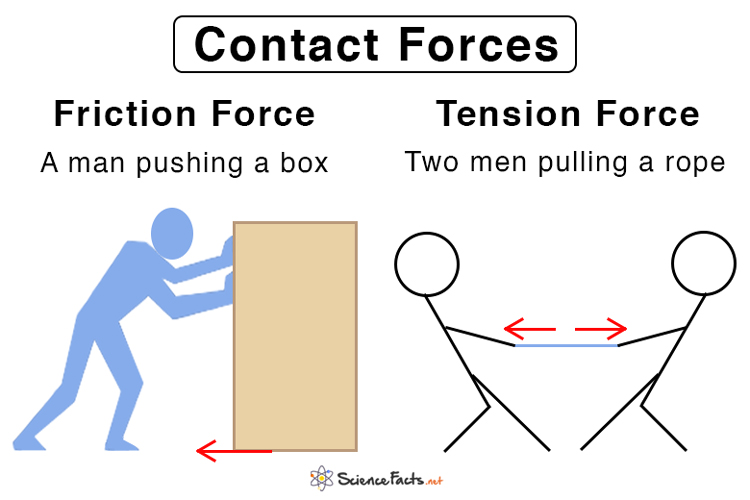
Join our Newsletter
Fill your E-mail Address
Related Worksheets
- Privacy Policy
© 2024 ( Science Facts ). All rights reserved. Reproduction in whole or in part without permission is prohibited.
What is the 'Gold Foil Experiment'? The Geiger-Marsden experiments explained
Physicists got their first look at the structure of the atomic nucleus.

J.J. Thomson model of the atom
Gold foil experiments, rutherford model of the atom.
- The real atomic model
Additional Resources
Bibliography.
The Geiger-Marsden experiment, also called the gold foil experiment or the α-particle scattering experiments, refers to a series of early-20th-century experiments that gave physicists their first view of the structure of the atomic nucleus and the physics underlying the everyday world. It was first proposed by Nobel Prize -winning physicist Ernest Rutherford.
As familiar as terms like electron, proton and neutron are to us now, in the early 1900s, scientists had very little concept of the fundamental particles that made up atoms .
In fact, until 1897, scientists believed that atoms had no internal structure and believed that they were an indivisible unit of matter. Even the label "atom" gives this impression, given that it's derived from the Greek word "atomos," meaning "indivisible."

But that year, University of Cambridge physicist Joseph John Thomson discovered the electron and disproved the concept of the atom being unsplittable, according to Britannica . Thomson found that metals emitted negatively charged particles when illuminated with high-frequency light.
His discovery of electrons also suggested that there were more elements to atomic structure. That's because matter is usually electrically neutral; so if atoms contain negatively charged particles, they must also contain a source of equivalent positive charge to balance out the negative charge.
By 1904, Thomson had suggested a "plum pudding model" of the atom in which an atom comprises a number of negatively charged electrons in a sphere of uniform positive charge, distributed like blueberries in a muffin.
The model had serious shortcomings, however — primarily the mysterious nature of this positively charged sphere. One scientist who was skeptical of this model of atoms was Rutherford, who won the Nobel Prize in chemistry for his 1899 discovery of a form of radioactive decay via α-particles — two protons and two neutrons bound together and identical to a helium -4 nucleus, even if the researchers of the time didn't know this.
Rutherford's Nobel-winning discovery of α particles formed the basis of the gold foil experiment, which cast doubt on the plum pudding model. His experiment would probe atomic structure with high-velocity α-particles emitted by a radioactive source. He initially handed off his investigation to two of his protégés, Ernest Marsden and Hans Geiger, according to Britannica .
Rutherford reasoned that if Thomson's plum pudding model was correct, then when an α-particle hit a thin foil of gold, the particle should pass through with only the tiniest of deflections. This is because α-particles are 7,000 times more massive than the electrons that presumably made up the interior of the atom.
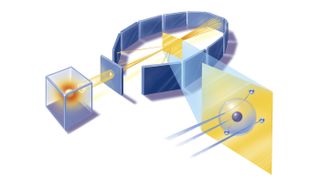
Marsden and Geiger conducted the experiments primarily at the Physical Laboratories of the University of Manchester in the U.K. between 1908 and 1913.
The duo used a radioactive source of α-particles facing a thin sheet of gold or platinum surrounded by fluorescent screens that glowed when struck by the deflected particles, thus allowing the scientists to measure the angle of deflection.
The research team calculated that if Thomson's model was correct, the maximum deflection should occur when the α-particle grazed an atom it encountered and thus experienced the maximum transverse electrostatic force. Even in this case, the plum pudding model predicted a maximum deflection angle of just 0.06 degrees.
Of course, an α-particle passing through an extremely thin gold foil would still encounter about 1,000 atoms, and thus its deflections would be essentially random. Even with this random scattering, the maximum angle of refraction if Thomson's model was correct would be just over half a degree. The chance of an α-particle being reflected back was just 1 in 10^1,000 (1 followed by a thousand zeroes).
Yet, when Geiger and Marsden conducted their eponymous experiment, they found that in about 2% of cases, the α-particle underwent large deflections. Even more shocking, around 1 in 10,000 α-particles were reflected directly back from the gold foil.
Rutherford explained just how extraordinary this result was, likening it to firing a 15-inch (38 centimeters) shell (projectile) at a sheet of tissue paper and having it bounce back at you, according to Britannica
Extraordinary though they were, the results of the Geiger-Marsden experiments did not immediately cause a sensation in the physics community. Initially, the data were unnoticed or even ignored, according to the book "Quantum Physics: An Introduction" by J. Manners.
The results did have a profound effect on Rutherford, however, who in 1910 set about determining a model of atomic structure that would supersede Thomson's plum pudding model, Manners wrote in his book.
The Rutherford model of the atom, put forward in 1911, proposed a nucleus, where the majority of the particle's mass was concentrated, according to Britannica . Surrounding this tiny central core were electrons, and the distance at which they orbited determined the size of the atom. The model suggested that most of the atom was empty space.
When the α-particle approaches within 10^-13 meters of the compact nucleus of Rutherford's atomic model, it experiences a repulsive force around a million times more powerful than it would experience in the plum pudding model. This explains the large-angle scatterings seen in the Geiger-Marsden experiments.
Later Geiger-Marsden experiments were also instrumental; the 1913 tests helped determine the upper limits of the size of an atomic nucleus. These experiments revealed that the angle of scattering of the α-particle was proportional to the square of the charge of the atomic nucleus, or Z, according to the book "Quantum Physics of Matter," published in 2000 and edited by Alan Durrant.
In 1920, James Chadwick used a similar experimental setup to determine the Z value for a number of metals. The British physicist went on to discover the neutron in 1932, delineating it as a separate particle from the proton, the American Physical Society said .
What did the Rutherford model get right and wrong?
Yet the Rutherford model shared a critical problem with the earlier plum pudding model of the atom: The orbiting electrons in both models should be continuously emitting electromagnetic energy, which would cause them to lose energy and eventually spiral into the nucleus. In fact, the electrons in Rutherford's model should have lasted less than 10^-5 seconds.
Another problem presented by Rutherford's model is that it doesn't account for the sizes of atoms.
Despite these failings, the Rutherford model derived from the Geiger-Marsden experiments would become the inspiration for Niels Bohr 's atomic model of hydrogen , for which he won a Nobel Prize in Physics .
Bohr united Rutherford's atomic model with the quantum theories of Max Planck to determine that electrons in an atom can only take discrete energy values, thereby explaining why they remain stable around a nucleus unless emitting or absorbing a photon, or light particle.
Thus, the work of Rutherford, Geiger (who later became famous for his invention of a radiation detector) and Marsden helped to form the foundations of both quantum mechanics and particle physics.
Rutherford's idea of firing a beam at a target was adapted to particle accelerators during the 20th century. Perhaps the ultimate example of this type of experiment is the Large Hadron Collider near Geneva, which accelerates beams of particles to near light speed and slams them together.
- See a modern reconstruction of the Geiger-Marsden gold foil experiment conducted by BackstageScience and explained by particle physicist Bruce Kennedy .
- Find out more about the Bohr model of the atom which would eventually replace the Rutherford atomic model.
- Rutherford's protege Hans Gieger would eventually become famous for the invention of a radioactive detector, the Gieger counter. SciShow explains how they work .
Thomson's Atomic Model , Lumens Chemistry for Non-Majors,.
Rutherford Model, Britannica, https://www.britannica.com/science/Rutherford-model
Alpha particle, U.S NRC, https://www.nrc.gov/reading-rm/basic-ref/glossary/alpha-particle.html
Manners. J., et al, 'Quantum Physics: An Introduction,' Open University, 2008.
Durrant, A., et al, 'Quantum Physics of Matter,' Open University, 2008
Ernest Rutherford, Britannica , https://www.britannica.com/biography/Ernest-Rutherford
Niels Bohr, The Nobel Prize, https://www.nobelprize.org/prizes/physics/1922/bohr/facts/
House. J. E., 'Origins of Quantum Theory,' Fundamentals of Quantum Mechanics (Third Edition) , 2018

Sign up for the Live Science daily newsletter now
Get the world’s most fascinating discoveries delivered straight to your inbox.
Robert Lea is a science journalist in the U.K. who specializes in science, space, physics, astronomy, astrophysics, cosmology, quantum mechanics and technology. Rob's articles have been published in Physics World, New Scientist, Astronomy Magazine, All About Space and ZME Science. He also writes about science communication for Elsevier and the European Journal of Physics. Rob holds a bachelor of science degree in physics and astronomy from the U.K.’s Open University
Infamous 'sofa problem' that boggled mathematicians for decades may finally have a solution
The shape of light: Scientists reveal image of an individual photon for 1st time ever
The gut 'remodels' itself during pregnancy, study finds
Most Popular
- 2 Marble Caves: Chile's ethereal turquoise caverns with 'mineral ice cream' on the walls
- 3 Stealth destroyer 1st to carry hypersonic missiles that travel 5 times the speed of sound — with testing imminent
- 4 China aims to be 1st to bring samples back from Mars
- 5 Why does Earth look flat if it's really round?
Experimental Evidence for the Structure of the Atom
George sivulka march 23, 2017, submitted as coursework for ph241 , stanford university, winter 2017, introduction.
The Rutherford Gold Foil Experiment offered the first experimental evidence that led to the discovery of the nucleus of the atom as a small, dense, and positively charged atomic core. Also known as the Geiger-Marsden Experiments, the discovery actually involved a series of experiments performed by Hans Geiger and Ernest Marsden under Ernest Rutherford. With Geiger and Marsden's experimental evidence, Rutherford deduced a model of the atom, discovering the atomic nucleus. His "Rutherford Model", outlining a tiny positively charged atomic center surrounded by orbiting electrons, was a pivotal scientific discovery revealing the structure of the atoms that comprise all the matter in the universe.
The experimental evidence behind the discovery involved the scattering of a particle beam after passing through a thin gold foil obstruction. The particles used for the experiment - alpha particles - are positive, dense, and can be emitted by a radioactive source. Ernest Rutherford discovered the alpha particle as a positive radioactive emission in 1899, and deduced its charge and mass properties in 1913 by analyzing the charge it induced in the air around it. [1] As these alpha particles have a significant positive charge, any significant potential interference would have to be caused by a large concentration of electrostatic force somewhere in the structure of the atom. [2]
Previous Model of the Atom
The scattering of an alpha particle beam should have been impossible according to the accepted model of the atom at the time. This model, outlined by Lord Kelvin and expanded upon by J. J. Thompson following his discovery of the electron, held that atoms were comprised of a sphere of positive electric charge dotted by the presence of negatively charged electrons. [3] Describing an atomic model similar to "plum pudding," it was assumed that electrons were distributed throughout this positive charge field, like plums distributed in the dessert. However, this plum pudding model lacked the presence of any significant concentration of electromagnetic force that could tangibly affect any alpha particles passing through atoms. As such, alpha particles should show no signs of scattering when passing through thin matter. [4] (see Fig. 2)
The Geiger Marsden Experiments
Testing this accepted theory, Hans Geiger and Ernest Marsden discovered that atoms indeed scattered alpha particles, a experimental result completely contrary to Thompson's model of the atom. In 1908, the first paper of the series of experiments was published, outlining the apparatus used to determine this scattering and the scattering results at small angles. Geiger constructed a two meter long glass tube, capped off on one end by radium source of alpha particles and on the other end by a phosphorescent screen that emitted light when hit by a particle. (see Fig. 3) Alpha particles traveled down the length of the tube, through a slit in the middle and hit the screen detector, producing scintillations of light that marked their point of incidence. Geiger noted that "in a good vacuum, hardly and scintillations were observed outside of the geometric image of the slit, "while when the slit was covered by gold leaf, the area of the observed scintillations was much broader and "the difference in distribution could be noted with the naked eye." [5]
On Rutherford's request, Geiger and Marsden continued to test for scattering at larger angles and under different experimental parameters, collecting the data that enabled Rutherford to further his own conclusions about the nature of the nucleus. By 1909, Geiger and Marsden showed the reflection of alpha particles at angles greater than 90 degrees by angling the alpha particle source towards a foil sheet reflector that then would theoretically reflect incident particles at the detection screen. Separating the particle source and the detector screen by a lead barrier to reduce stray emission, they noted that 1 in every 8000 alpha particles indeed reflected at the obtuse angles required by the reflection of metal sheet and onto the screen on the other side. [6] Moreover, in 1910, Geiger improved the design of his first vacuum tube experiment, making it easier to measure deflection distance, vary foil types and thicknesses, and adjust the alpha particle stream' velocity with mica and aluminum obstructions. Here he discovered that both thicker foil and foils made of elements of increased atomic weight resulted in an increased most probable scattering angle. Additionally, he confirmed that the probability for an angle of reflection greater than 90 degrees was "vanishingly small" and noted that increased particle velocity decreased the most probably scattering angle. [7]
Rutherford's Atom
Backed by this experimental evidence, Rutherford outlined his model of the atom's structure, reasoning that as atoms clearly scattered incident alpha particles, the structure contained a much larger electrostatic force than earlier anticipated; as large angle scattering was a rare occurrence, the electrostatic charge source was only contained within a fraction of the total volume of the atom. As he concludes this reasoning with the "simplest explanation" in his 1911 paper, the "atom contains a central charge distributed through a very small volume" and "the large single deflexions are due to the central charge as a whole." In fact, he mathematically modeled the scattering patterns predicted by this model with this small central "nucleus" to be a point charge. Geiger and Marsden later experimentally verified each of the relationships predicted in Rutherford's mathematical model with techniques and scattering apparatuses that improved upon their prior work, confirming Rutherford's atomic structure. [4, 8, 9] (see Fig. 1)
With the experimentally analyzed nature of deflection of alpha rays by thin gold foil, the truth outlining the structure of the atom falls into place. Though later slightly corrected by Quantum Mechanics effects, the understanding of the structure of the the atom today almost entirely follows form Rutherford's conclusions on the Geiger and Marsden experiments. This landmark discovery fundamentally furthered all fields of science, forever changing mankind's understanding of the world around us.
© George Sivulka. The author grants permission to copy, distribute and display this work in unaltered form, with attribution to the author, for noncommercial purposes only. All other rights, including commercial rights, are reserved to the author.
[1] E. Rutherford, "Uranium Radiation and the Electrical Conduction Produced By It," Philos. Mag. 47 , 109 (1899).
[2] E. Rutherford, "The Structure of the Atom," Philos. Mag. 27 , 488 (1914).
[3] J. J. Thomson, "On the Structure of the Atom: an Investigation of the Stability and Periods of Oscillation of a Number of Corpuscles Arranged at Equal Intervals Around the Circumference of a Circle; with Application of the Results to the Theory of Atomic Structure," Philos. Mag. 7 , 237 (1904).
[4] E. Rutherford, "The Scattering of α and β Particles by Matter and the Structure of the Atom," Philos. Mag. 21 , 669 (1911).
[5] H. Geiger, "On the Scattering of the α Particles by Matter," Proc. R. Soc. A 81 , 174 (1908).
[6] H. Geiger and E. Marsden, "On a Diffuse Reflection of the α-Particles," Proc. R. Soc. A 82 , 495 (1909).
[7] H. Geiger, "The Scattering of the α Particles by Matter," Proc. R. Soc. A 83 , 492 (1910).
[8] E. Rutherford, "The Origin of α and β Rays From Radioactive Substances," Philos. Mag. 24 , 453 (1912).
[9] H. Geiger and E. Marsden, "The Laws of Deflexion of α Particles Through Large Angles," Philos. Mag. 25 , 604 (1913).

Discovering the Nucleus: Rutherford’s Gold Foil Experiment

History of Chemistry: Rutherford Gold Foil Experiment
In this article, you will learn the history behind the Rutherford Gold Foil Experiment and the events that led to the discovery of the atomic nucleus. If you enjoy this article, check out our other history of chemistry articles linked below!
- Rutherford Atomic Model
- JJ Thompson cathode-ray tube
- Rutherfords Jar Experiment
- Molecular Geometry tutorial
- The structure of an atom
- Bohr Atomic Model
- Nuclear Reactions
Who was Ernest Rutherford?

Ernest Rutherford is known as the father of nuclear physics. Born in Brightwater, New Zealand on August 30th, 1871, Rutherford was the fourth of twelve children. His father was a farmer and his mother a school teacher. From a very early age, Rutherford understood the importance of hard work and the power of education. In school, he excelled greatly and at the age of fifteen won an academic scholarship to study at Nelson Collegiate School. Then, at the age of 19, he won another academic scholarship to study at Canterbury College in Christchurch. A few years later he won another scholarship, the exhibition science scholarship, and he left New Zealand to study at Trinity College, Cambridge in England. While there, he conducted research at the Cavendish Laboratory under his advisor J.J. Thomson .

During his time at Cavendish Lab, Rutherford faced adversity from his peers. Because he was from New Zealand, he was often ostracized by fellow students. In the end, he used this as motivation to succeed. Which he did as he made a multitude of great discoveries through his research in gases and radioactivity. These included the discovery of different types of radiation, radiometric dating, and the nucleus of an atom.
The Rutherford Gold Foil Experiment
The experiment.
While working as a chair at the University of Manchester, Rutherford conducted the gold-foil experiment alongside Hans Geiger and Ernest Marsden. In this experiment, they shot alpha particles –which Rutherford had discovered years prior– directly at a piece of thin gold foil . As the alpha particles passed through, they would hit the phosphorescent screen encasing the foil. When the particles came into contact with the screen, there would be a flash.

Observations
Going into the experiment, Rutherford had formed preconceptions for the experiment based on J.J. Thomson’s plum pudding model . He predicted the alpha particles would shoot through the foil with ease. Some of the particles did manage to pass directly through the foil, but some veered from the path either bouncing back or deflecting. Rutherford found this to be an exciting observation and compared it to shooting a bullet at a piece of tissue and having it bounce back.
From this observation, two deductions were made. Firstly, he concluded most of the atom is composed of empty space. Secondly, he concluded there must be something small, dense, and positive inside the atom to repel the positively charged alpha particles. This became the nucleus, which in Latin means the seed inside of a fruit.
The Nuclear Model
The gold-foil experiment disproved J.J. Thomsons plum pudding model, which hypothesized the atom was positively charged spaced with electrons embedded inside. Therefore, giving way to the nuclear model. In this model, Rutherford theorized the atomic structure was similar to that of the solar system. Where the nucleus was in this middle and surrounded by empty space with orbiting electrons.
PhysicsOpenLab Modern DIY Physics Laboratory for Science Enthusiasts
The rutherford-geiger-marsden experiment.
April 11, 2017 Alpha Spectroscopy , English Posts 89,693 Views

What made by Rutherford and his assistants Geiger and Marsden is perhaps one of the most important experiments of nuclear physics.
The experiments were performed between 1908 and 1913 by Hans Geiger and Ernest Marsden under the direction of Ernest Rutherford at the Physical Laboratories of the University of Manchester.
In the experiment, Rutherford sent a beam of alpha particles (helium nuclei) emitted from a radioactive source against a thin gold foil (the thickness of about 0.0004 mm, corresponding to about 1000 atoms).
Surrounding the gold foil it was placed a zinc sulfide screen that would show a small flash of light when hit by a scattered alpha particle. The idea was to determine the structure of the atom and understand if it were what supposed by Thomson (atom without a nucleus, also known as pudding model ) or if there was something different.

In particular, if the atom had an internal nucleus separated from external electrons, then they would have been able to observe events, or particles, with large angle of deviation . Obtained, actually, these results, the New Zealand physicist concluded that the atom was formed by a small and compact nucleus , but with high charge density, surrounded by an electron cloud. In the image below it is depicted the interaction of the alpha particles beam with the nuclei of the thin gold foil; one can see how the majority of the particles passes undisturbed, or with small angles of deflection, through the “empty” atom, some particles, however, passing close to the nucleus are diverted with a high angle or even bounced backwards.

The interaction between an alpha particle and the nucleus (elastic collision) is also known as Coulomb scattering , because the interaction in the collision is due to the Coulomb force. In the diagram below it is shown the detail of the interaction between an alpha particle and the nucleus of an atom.

Experimental Setup
In the PhysicsOpenLab “laboratory” we tried to replicate the famous Rutherford experiment. With the equipment already used in alpha spectroscopy we built a setup based on an alpha solid-state detector , a 0.9 μCi Am 241 source and a gold foil as a scatterer. In these post we describe the equipment used : Alpha Spectrometer , Gold Leaf Thickness . The main purpose is not to make precision measurements but to make a qualitative assessment of the scattering as a function of deflection. The images below show the experimental setup:

The alpha source is actually 0.9 μCi of Am 241 (from smoke detector) which emits alpha particles with energy of 5.4 MeV. The alpha particle beam is collimated by a simple hole in a wooden screen. Source and collimator are fixed on a arm free to rotate around a pivot, which hosts the gold foil that acts as a scatterer. The whole is placed inside a sealed box that acts as a vacuum chamber with the help of an ordinary oil rotary vacuum pump. The images below show the “vacuum chamber” and the electronic part for amplification and acquisition connected to the PC for counting events.

Linear Scale :

Semilog Scale

The results obtained in our experiment approach, albeit with obvious limitations, to the expected theoretical results, represented in the following graph:

For completeness, we report also at the side the formula that describes the distribution of the number of the counted particles in function of the scattering angle. Interestingly, this depends on the power of two the atomic number of the target and is inversely proportional to the fourth power of the sin (θ/2).
If you liked this post you can share it on the “social” Facebook , Twitter or LinkedIn with the buttons below. This way you can help us! Thank you !
If you like this site and if you want to contribute to the development of the activities you can make a donation, thank you !
Tags Alpha spectrometer Rutherford

Muon decay measurement with Red Pitaya
Abstract: in this article, we present the design of a cosmic ray detector based on a plastic scintillator and photomultiplier. The pulses produced by the interaction of cosmic rays are acquired using the Red Pitaya microcomputer. The Red Pitaya's high sampling rate and the possibility of subsequent software processing of the acquired pulses make it possible to measure the decay time of the muons that come to rest inside the scintillator.

IMAGES
VIDEO
COMMENTS
A replica of an apparatus used by Geiger and Marsden to measure alpha particle scattering in a 1913 experiment. The Rutherford scattering experiments were a landmark series of experiments by which scientists learned that every atom has a nucleus where all of its positive charge and most of its mass is concentrated. They deduced this after measuring how an alpha particle beam is scattered when ...
Description. The method used by scientists included the following experimental steps and procedure. They bombarded a thin gold foil of thickness approximately 8.6 x 10-6 cm with a beam of alpha particles in a vacuum. Alpha particles are positively charged particles with a mass of about four times that of a hydrogen atom and are found in radioactive natural substances.
The nucleus was postulated as small and dense to account for the scattering of alpha particles from thin gold foil, as observed in a series of experiments performed by undergraduate Ernest Marsden under the direction of Rutherford and German physicist Hans Geiger in 1909. A radioactive source emitting alpha particles (i.e., positively charged particles, identical to the helium atom nucleus and ...
Here, an illustration of Rutherford's particle scattering device used in his gold foil experiment. (Image credit: BSIP/UIG Via Getty Images) Marsden and Geiger conducted the experiments primarily ...
The particles used for the experiment - alpha particles - are positive, dense, and can be emitted by a radioactive source. Ernest Rutherford discovered the alpha particle as a positive radioactive emission in 1899, and deduced its charge and mass properties in 1913 by analyzing the charge it induced in the air around it. [1]
The Rutherford Gold Foil Experiment The Experiment. While working as a chair at the University of Manchester, Rutherford conducted the gold-foil experiment alongside Hans Geiger and Ernest Marsden. In this experiment, they shot alpha particles-which Rutherford had discovered years prior- directly at a piece of thin gold foil. As the alpha ...
In the experiment, Rutherford sent a beam of alpha particles (helium nuclei) emitted from a radioactive source against a thin gold foil (the thickness of about 0.0004 mm, corresponding to about 1000 atoms). Surrounding the gold foil it was placed a zinc sulfide screen that would show a small flash of light when hit by a scattered alpha particle.
Ernest Rutherford in 1911, with his postulates concerning the scattering of alpha particles by atoms. Two of his students, Hans Geiger and Ernest Marsden (an undergraduate), set out to measure ... alpha beam, and this can be covered with gold foil to fully simulate the energy loss in the gold foil scattering experiment. 3. Figure 4: This image ...
Rutherford's Gold Foil Experiment In 1909, Rutherford enlisted his assistant, Hans Geiger, and a research student, Ernest Marsden to investigate the scattering of alpha particles, positively charged particles, upon different metals. In the experiment a glass conical tube was filled with radium emanation and sealed at the cone with a thin
A piece of gold foil was hit with alpha particles, which have a positive charge. Most alpha particles went right through. This showed that the gold atoms were mostly empty space. Some particles had their paths bent at large angles. A few even bounced backward.